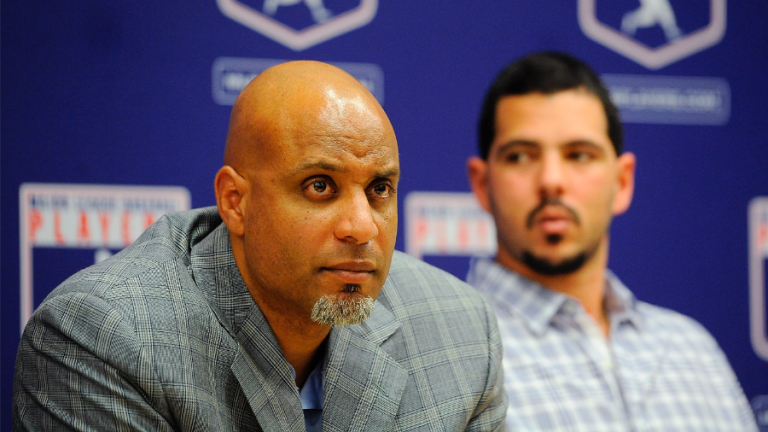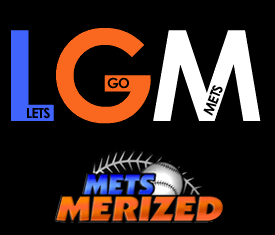
It’s day 69 of the lockout. Major League Baseball’s owners are meeting in Orlando, Florida for their routine quarterly meetings, only this time with an enormous dark cloud hanging over the game. The Major League Baseball Players’ Association is meeting with players in Arizona and will conduct similar meetings with players in Florida later this week.
It seems like both sides should be huddling, preparing themselves to dig in and meet in the near future. After all, spring training reporting dates were originally planned for a week from now, and the opening of camps will be delayed. If players are not at the training facilities by early March (which is closer than it sounds), the start of the regular season will be delayed, and the sport will have an ugly, plainly visible stain that will take many cycles to clean.
But these negotiations are between MLB and the MLBPA, two sides that talk past each other rather than to each other. According to Evan Drellich of The Athletic, no new meetings are planned.
ORLANDO, Fla. — Rob Manfred, Dan Halem and MLB owners are meeting at a hotel near Disney World. Tony Clark and Bruce Meyer are meeting with players in Arizona today and then later in the week, Florida. Manfred is to speak to media Thursday. No meeting between MLB, MLBPA scheduled
— Evan Drellich (@EvanDrellich) February 8, 2022
That may be surprising, but give the history, it really is not. On social media, fans are growing more agitated every day. Some are picking sides in the labor dispute. Others are expressing that if games are missed, they will be “done”, will not pay attention to a shortened season, and may take time come back if they do at all.
As far as I’m concerned, there is plenty of blame to go around. Both sides have cranked up their public relations machines to try to have the public believe that they are fighting the good fight, and the other side is the problem. As in most cases, the truth is somewhere in the middle. Here are a couple of sources of my frustration with the whole process (or “lack of process” is probably more accurate).
Let’s start with the owners. Yes, Commissioner Rob Manfred does not dictate their policy. He works for the owners and, along with his negotiating team, represents them. However, in his prior role, Manfred was the lead labor negotiator for MLB. His role (and success) in labor relations was cited as a primary reason he was named commissioner back in 2014. When MLB imposed the lockout, Manfred said:
“There is a path to a fair agreement, and we will find it … I remain optimistic that both sides will seize the opportunity to work together …MLB is ready to work around the clock to meet that goal…”
The owners have not exactly “worked around the clock.” The significant time they’ve taken to respond to union proposals, and not making a counteroffer last week when they said they would, has become a rallying point for the players. It seems that rather than working around the clock, the owners are content to let games be lost, or threaten that games will be lost, to get a better deal as players feel pressure to not face another season with reduced pay (they played for 37% of their pay in 2020).
Lost pay for a portion of the season may not hurt Max Scherzer, Francisco Lindor, Gerrit Cole, or Bryce Harper, but it may hurt pre-arbitration players, the very group that the players say they’re fighting for in these Collective Bargaining Agreement negotiations. While the MLB minimum salary of $570,500 is quite a bit of money, players at that level, and losing a portion of that income, may feel a pinch and put pressure on the union to push for a deal. MLB knows this and is likely using it as a leverage point.
On the players’ side, they appear to have been more aggressive in putting proposals on the table (and the owners have agreed to a bonus pool concept for pre-arbitration players). One of the key planks in the union’s platform is making the game more competitive, putting a disincentive(s) in place for “tanking.” MLB and the MLBPA seem to have agreed in concept to a draft lottery, so teams are not rewarded for not being competitive by automatically securing prime draft picks.
However, the union also wants a significant rise in the threshold of the Competitive Balance Tax and a lowering of the tax rates. This would encourage more “top end” spending by the teams in the playoff races, or expecting to be in the races, with the resources to spend.
The union feels that the CBT functions as a soft cap and the evidence supports that assertion. It’s curious, and seems disingenuous, to advocate for competitive balance on the “bottom end” by not rewarding bad teams with the best draft picks, but allowing for the wealthiest teams to possibly spend their way to a championship by having fewer spending inhibitions at the top. That kind of sounds like “competitive balance” unless it means taking money out of our pockets. The other problem here is that the players and owners have not even broached the CBT topic yet. This could be the highest hurdle on the way to an agreement, as both sides seem locked in their positions.
Here’s the bottom line. There is significant work to do to avoid missed games this season. MLB and the MLBPA are talking among themselves, and to the fans (Manfred is expected to speak on Thursday), but they are in no rush to talk to each other. There will be no baseball until they start meeting and talking, as distasteful as that may be to them.
So we keep waiting. The fans are edgy and have a sense of urgency to get this thing resolved and put players on the fields in Arizona and Florida.
It would be nice if the players and owners started to show a similar sense of urgency.















